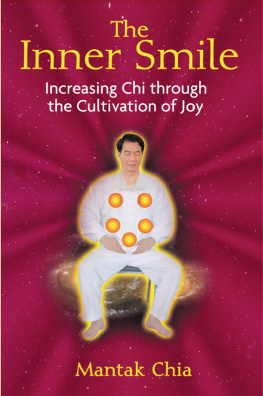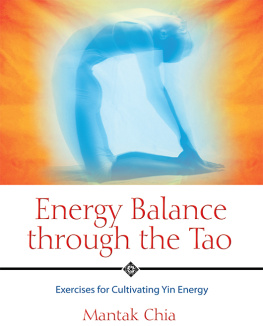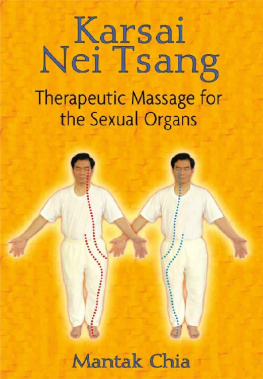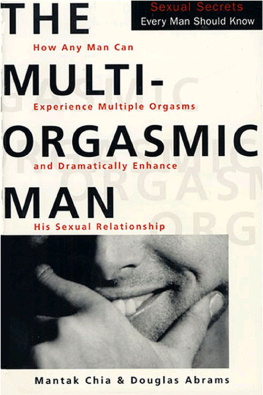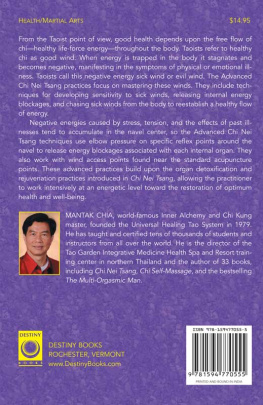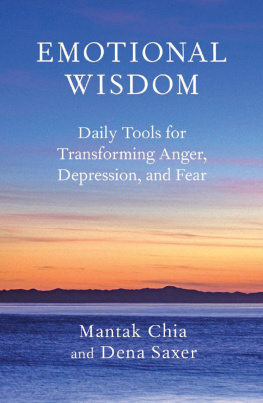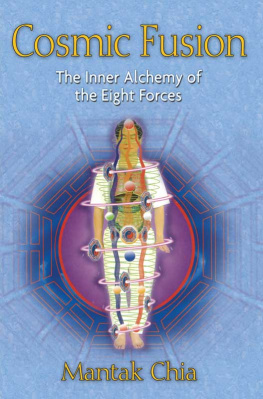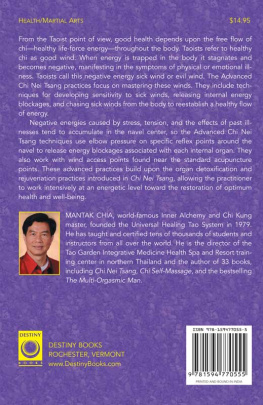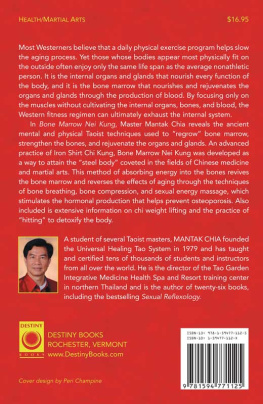The Inner Smile
Increasing Chi through
the Cultivation of Joy

Mantak Chia

Destiny Books
Rochester, Vermont
 Acknowledgments
Acknowledgments
We extend our gratitude to the many generations of Taoist masters who have passed on their special lineage as an unbroken oral transmission over thousands of years. We particularly thank Taoist Master I Yun (Yi Eng) for his openness in transmitting the formulas of Taoist Inner Alchemy.
We offer our eternal gratitude to our parents and teachers for their many gifts to us. Remembering them brings joy and satisfaction to our continued efforts in presenting the Universal Tao system.
We also wish to thank the thousands of unknown men and women of the Chinese healing arts who developed many of the methods and ideas presented in this book.
We thank the many contributors essential to this books final form: The editorial and production staff at Inner Traditions/Destiny Books for their efforts to clarify the text and produce a handsome new edition of the book, Victoria SantAmbrogio for her line edit of the new edition, and the artist, Juan Li, for his fine illustrations.
We wish to thank the following people who contributed to the earlier editions of this book: Dena Saxer, Udon, Lee Holden, Wilbert Wils, Jean Chilton, Jettaya Phaobtong, and Saumya Comer. We also thank our Thai Production team, Raruen Keawpadung, Saysunee Yongyod, Udon Jandee, and Saniem Chaisarn.

| Putting the Inner Smile into Practice |
The practices described in this book have been used successfully for thousands of years by Taoists trained by personal instruction. Readers should not undertake the practices without receiving personal transmission and training from a certified instructor of the Universal Tao, since certain of these practices, if done improperly, may cause injury or result in health problems. This book is intended to supplement individual training by the Universal Tao and to serve as a reference guide for these practices. Anyone who undertakes these practices on the basis of this book alone does so entirely at his or her own risk.
The meditations, practices, and techniques described herein are not intended to be used as an alternative or substitute for professional medical treatment and care. If any readers are suffering from illnesses based on mental or emotional disorders, they should consult an appropriate professional health care practitioner or therapist. Such problems should be corrected before you start training.
This book does not attempt to give any medical diagnosis, treatment, prescription, or remedial recommendation in relation to any human disease, ailment, suffering, or physical condition whatsoever.
Neither the Universal Tao nor its staff and instructors can be responsible for the consequences of any practice or misuse of the information contained in this book. If the reader undertakes any exercise without strictly following the instructions, notes, and warnings, the responsibility must lie solely with the reader.

What Is the Universal Tao?
The Universal Tao is a self-help system for curing and preventing illness and stress, and for enhancing all aspects of life. Its key concept is increasing vital energy, or chi, through easy techniques and physical exercises. This life-force energy is then circulated through the acupuncture meridians of the body and channeled into health, vitality, balanced emotions, and creative and spiritual expression.
A practical system accessible to everybody, the Universal Tao is a modern expression of Taoist practices that are centuries old. Many of these techniques were formerly known only to an elite group of Taoist masters and hand-picked students. I have formulated these powerful practices into a comprehensive system, which I began teaching to the public at large in my native Thailand in 1973. In 1978, I brought this system to the Western world. I then opened the Universal Tao Center in New York and began teaching the practices there. Today, we teach our system in various places throughout the United States and Europe. Though spiritual in its foundation, the Universal Tao is not a religion. It is compatible with all religions, as well as with agnosticism and atheism. There are no rituals to perform and no gurus to surrender to. The master and the teacher are highly respected, but they are not deified.
The entire system of the Universal Tao has three levels:
1. Level I concentrates on universal energy, strengthening and calming the body.
2. Level II concentrates on changing negative emotions into strong, positive energy.
3. Level III concentrates on creative and spiritual practices.
This book presents a detailed description and instructions for the Inner Smile meditation, an essential beginning practice for Level I of the system. All levels include both mental (meditative) practices and physical disciplines, such as Tai Chi, Pakua, and Iron Shirt Chi Kung. The foundation course called the Microcosmic Orbit is covered in my first book, Awaken Healing Energy Through the Tao, but is also summarized in this book as part of a daily practice. For a description of other courses and for the addresses and phone numbers of the Universal Tao centers, visit the Web site given at the end of this book.
TAOISM AND SOME BASIC CONCEPTS IN CHINESE HEALING
Taoism is the foundation of Chinese philosophy and medicine developed over 5,000 to 8,000 years of study and observation. It is also the mother of acupuncture and the inspiration for modern body-oriented therapies, such as acupressure, Rolfing, and the Feldenkrais method. The Tao has been described as natural law or natural order, the constantly changing cycle of the seasons, an art, a method, a power, and a path of direction.
In the Taoist view, harmony and balance are essential for health. Taoists see the body as a whole; therefore, stress or injury to one organ, gland, or system weakens the entire body. The body is also self-regulating and will naturally move toward balance if allowed to.
Illness is caused by a blockage of energy. Too much or too little energy in one part of the body results in disease to that part and stresses the entire body. The Universal Tao teaches us how to correct this imbalance by awakening the chi, or vital energy, and circulating it to the needed areas.
The Taoist system links each organ to one of the five elements in nature: metal, water, wood, fire, and earth. It also connects them to a season of the year, a color, and a quality in nature (wet, dry, warm, windy, etc.). This relationship often describes the characteristics of that organ. For example, the heart is linked to summer, fire, and red; a healthy heart is associated with excitement and warmth. The season of an organ is the one in which the organ is dominant or working the hardest.
Body, mind, and spirit are totally integrated in the Taoist view. Therefore, Chinese medicine finds that negative emotions, such as anger, fear, or cruelty, and excessive amounts of positive emotions, such as too much joy or excitement, can injure the organs and cause disease. Both the Inner Smile (covered in this book) and the Six Healing Sounds (covered in other Universal Tao books) help to balance the emotions as well as to improve health. For complete instructions on the Six Healing Sounds, see
Next page
